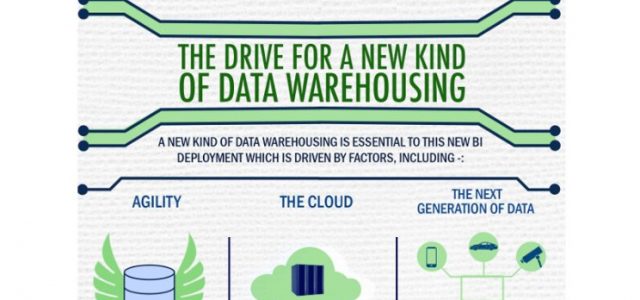There seems to be an increasing lack of understanding and subsequent appropriate analysis and design to the distinctions and relationships between: Business Systems, Information Systems and IT Systems.
This problem underpins a number of the issues that I outlined in the article IT systems as means not ends. It has prompted further discussion with colleagues and clients, and led me to conversations with Nigel Green, exploring the issues and responses that he outlined in the book “Lost in Translation“.
This article seeks to:
- describe the problem space as I see it in various client settings
- outline how I conceive of this in systems terms
- explore the implications of our failure to address these problems
- share some of the thinking tools that I use to undertake more effective analysis and design in this area
Outline
Let’s start by outlining what I mean by each of these terms, and hopefully, what you would assume that I intend to convey when I use these terms. You might wonder why I am bothering to do this? It has been my experience that these three terms are sometimes used interchangeably, when they are distinctly different (but related).
Business system
A business system is the combination of all elements which operate together to fulfill a business objective. A business system can entail some or all of:
- people, their knowledge, skills, behaviour, attitudes, observations, thoughts, actions
- process, implicit and explicit ways of “doing things”
- information, no matter where it is stored, including in computers, on paper, and in people’s minds
- assets, equipment, materials and supplies
- customers, suppliers, partners, regulators and other entities with which the business system interacts
Such systems could be part of an organisation, an entire organisation or a multi-organisational system. Examples include:
- Production system within a manufacturing organisation
- A retail store
- Criminal justice system
Business systems more than the information systems which they use to achieve their business objectives. Yet, business systems are more than information systems. They include a range of entities and activities beyond those involved in or relating to the information systems used by an organisation, including:
- machines in a factory
- rooms, furniture, food storage and food preparation devices in a restaurant
- medical equipment and supplies in an operating theatre
- people’s abilities to use these items and their interactions with each other
Information systems
An information system is the combination of elements required to collect, store, manage, remove, archive, access, analyse and report a nominated collection of information, including:
- people who record, update, manage or access the information
- records, irrespective of the medium on which they are recorded
- structures, whether they be documents, forms, images, databases
- processes which are invoked by people or technology in recording, updating, managing and accessing the information
As noted by Peter Checkland in Soft Systems Methodology in Action …
The boundary of an information system, if we are using the phrase seriously, will always have to include the attribution of meaning, which is a uniquely human act. An information system, in the exact sense of the phrase, will consist of both data manipulation, which machines do, and the transformation of the data into information by attribution of meaning. Of course, the designers of the data manipulating machine will have in mind a particular set of meaning attributions and will hope that the manipulated data will always be interpreted as particular information – but they cannot guarantee that, since users are ultimately autonomous.
Information systems encompass more than the IT systems that may be used to support them, including:
- the people and the processes and interactions that occur beyond an IT system that may be used
- other methods of recording and communicating information, including different media and the different methods of manipulating and interpreting the activities in which the organisation engages and interacts with other people and other objects
IT systems
Information technology systems encompass the hardware, software, networks, databases, configuration data which are composed in a particular manner to fulfill defined activities.
Little elaboration is required (hopefully) to distinguish IT systems from information systems and business systems. Yet, in the undertaking of business change projects, sometimes referred to as IT projects, the focus of the project is limited to realising the nature and intended function of the IT system, with little, and certainly insufficient, attention to the information systems and business systems which the IT system is required to support.
Extending beyond these definitions
There is a sense in which I have described:
- an IT system as being encompassed within an information system
- an information system as being encompassed within a business system
Of course, it is more complex than this, as information systems and IT systems can and often are created to be used by more than one business system. Nevertheless, the distinctions identified in a “simpler” scenario still apply.
There is another element to the distinctions and relative importance of business, information and IT systems. The business system provides the context within which information systems and IT systems are conceived, designed and realised. Such activities require consideration of the balance between the cost of creating and operating these systems, and the value derived by the business system in using these information and IT systems. There are numerous situations in which there will not be sufficient justification for creating proposed information systems or IT systems because the total cost of ownership (creation, operation and sustainment) exceeds the value that could conceivably be derived.
This is one of the fundamental reasons why an adequate understanding of any business system is required in proposing, designing, building and sustaining any information system or IT system.
Implications
Hopefully, the key implications of understanding and addressing the distinctions between business systems, information systems and IT systems are evident from the descriptions that I have provided for each. They are distinct and different. Each interacts with the other. The existence of an information system or IT system enables a business system to operate in a manner that is not possible without such systems. Design of any of these systems requires consideration of the interaction between all three types of systems and their design and future operation.
Hence, the key implications seem to me to be:
- Design of each of these systems requires consideration of the design of the other systems in play
- Design of information systems and IT systems requires consideration of the business systems they are intended to support in order to evaluate whether there is sufficient justification for the proposed scope and functionality of these systems
Tools
There is a wide range of thinking, analysis and design “tools” which can be used to ensure improved quality and integrity of the design, construction, operation and sustainment of business, information and IT systems.
Three key methods that I use in the early stages of proposing, designing and justifying information systems and IT systems relate to clear definition and articulation of:
- Objectives
- Scope
- Systems
For objectives, I seek to clearly articulate:
- the objectives of the business (system) – business objectives
- the objectives of the information system – system objectives
- the objectives of the project (being to realise the intended business system, information system and IT system) – project objectives
For scope, I seek to clearly articulate:
- the scope of the business system – in business function or business process terms
- the scope of the information system, but often the scope of the IT system
- the scope of the project
Careful and diligent attention to expression of these and the distinctions between them has proven highly valuable in reducing project risk as they provide valuable reference points for all subsequent project, operations and sustainment activities.
Further clarity is provided by describing:
- business context for the business system
- system context for the information and IT systems
These aid in giving attention to the encompassing systems of which the business, information and IT systems are part, providing further clarity to the scope and function of the intended systems, where it will need to be recognised that changing the “part” may not realise the outcomes sought within the “whole” – typically being the ecosystem within which the business system will be operating.
Other tools are outlined in the following articles:
Article by channel:
Everything you need to know about Digital Transformation
The best articles, news and events direct to your inbox
Read more articles tagged: Featured, Operating Model







